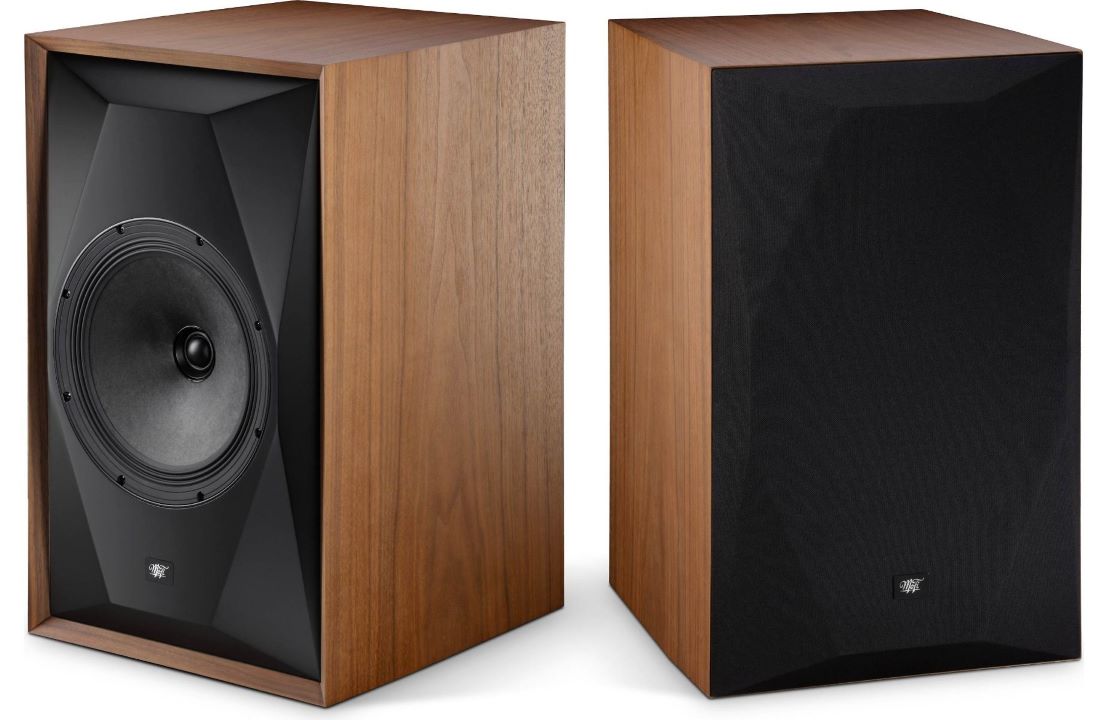Foreword / YouTube Video Review
This pair of speakers was loaned to me by the manufacturer.
All my reviews are done on my own time with great care to give you all the best set of data and information I can provide in order to help you make a well-informed purchase decision. I offer this for free to all who are interested. In return, if you want to support this site please see the bottom of this review for ways you can help. It is greatly appreciated.
The review on this website is a brief overview and summary of the objective performance of this speaker. It is not intended to be a deep dive. Moreso, this is information for those who prefer “just the facts” and prefer to have the data without the filler. The video below has more discussion with respect to the technical merits and subjective notes I had during my listening sessions.
Information and Photos
Some specs from the manufacturer can be found here.
- 10-inch concentric driver
- 1.25-inch wide roll soft dome tweeter
- 2-way vented box
- Satin Walnut or Satin Black Ash real wood veneer
- 5-way binding posts
- Magnetic grilles
- Dimensions (WxHxD): 14.5" x 22.5" x 16.6" with grille / 14.5" x 22.5" x 16" without grille
- Weight: 46.2 lb / 21kg each
- Warranty: Five years parts & labor
This is a rather large “bookshelf” style speaker and weighs in at about 46 lbs each. Retail cost is $3699/pair.
CTA-2034 (SPINORAMA) and Accompanying Data
All data collected using Klippel’s Near-Field Scanner. The Near-Field-Scanner 3D (NFS) offers a fully automated acoustic measurement of direct sound radiated from the source under test. The radiated sound is determined in any desired distance and angle in the 3D space outside the scanning surface. Directivity, sound power, SPL response and many more key figures are obtained for any kind of loudspeaker and audio system in near field applications (e.g. studio monitors, mobile devices) as well as far field applications (e.g. professional audio systems). Utilizing a minimum of measurement points, a comprehensive data set is generated containing the loudspeaker’s high resolution, free field sound radiation in the near and far field. For a detailed explanation of how the NFS works and the science behind it, please watch the below discussion with designer Christian Bellmann:
IMPORTANT SETUP INFO:
Per the manufacturer, this speaker was also tested off-axis at 10° horizontal of the tweeter. I also included the on-axis response as well to show the impact of the HF lift and diffraction when listening on-axis (which the manufacturer does not recommend).
No Grille for these measurements.
Measurements are provided in a format in accordance with the Standard Method of Measurement for In-Home Loudspeakers (ANSI/CTA-2034-A R-2020). For more information, please see this link.
CTA-2034 / SPINORAMA:
The On-axis Frequency Response (0°) is the universal starting point and in many situations it is a fair representation of the first sound to arrive at a listener’s ears.
The Listening Window is a spatial average of the nine amplitude responses in the ±10º vertical and ±30º horizontal angular range. This encompasses those listeners who sit within a typical home theater audience, as well as those who disregard the normal rules when listening alone.
The Early Reflections curve is an estimate of all single-bounce, first-reflections, in a typical listening room.
Sound Power represents all of the sounds arriving at the listening position after any number of reflections from any direction. It is the weighted rms average of all 70 measurements, with individual measurements weighted according to the portion of the spherical surface that they represent.
Sound Power Directivity Index (SPDI): In this standard the SPDI is defined as the difference between the listening window curve and the sound power curve.
Early Reflections Directivity Index (EPDI): is defined as the difference between the listening window curve and the early reflections curve. In small rooms, early reflections figure prominently in what is measured and heard in the room so this curve may provide insights into potential sound quality.
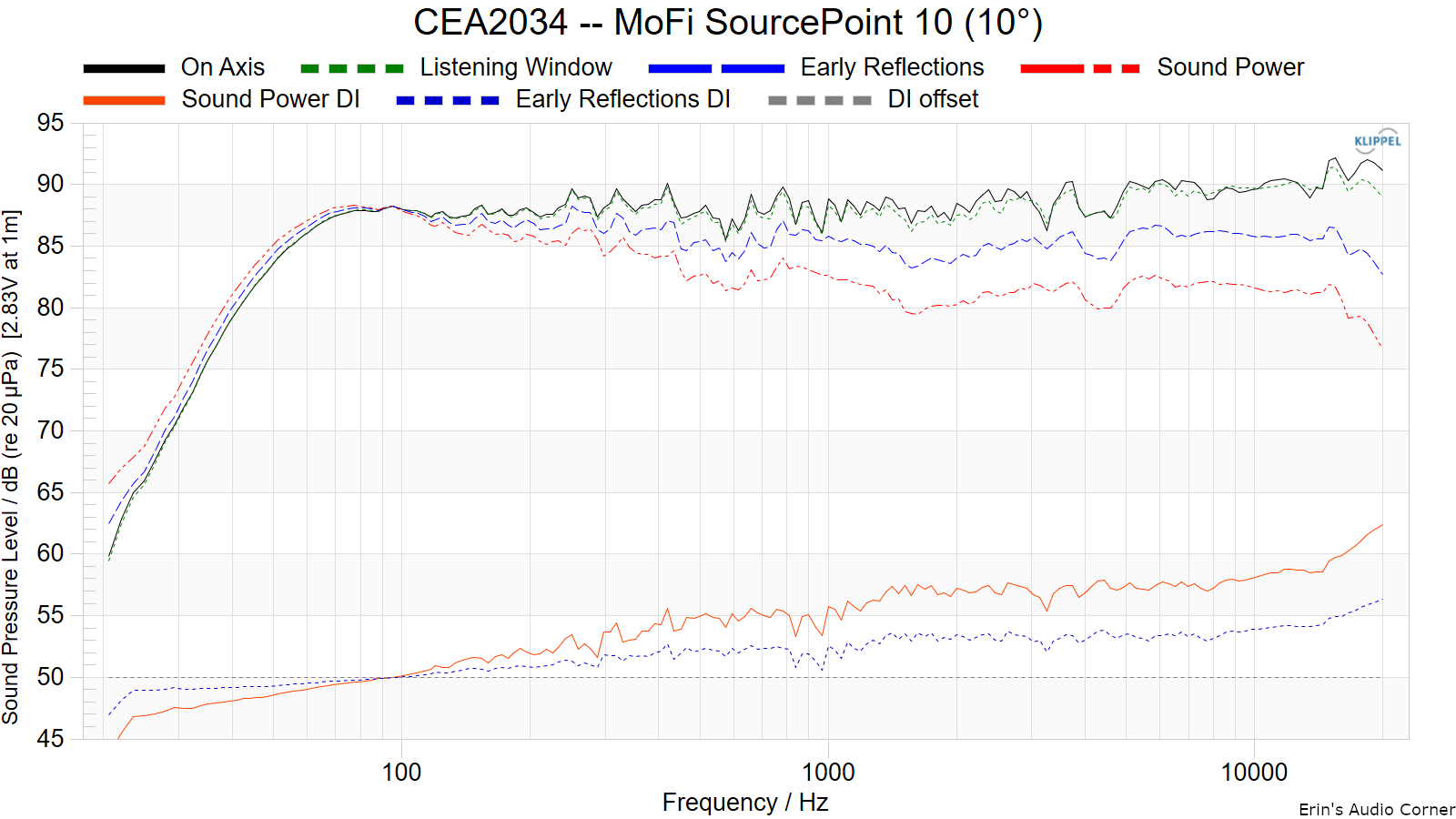
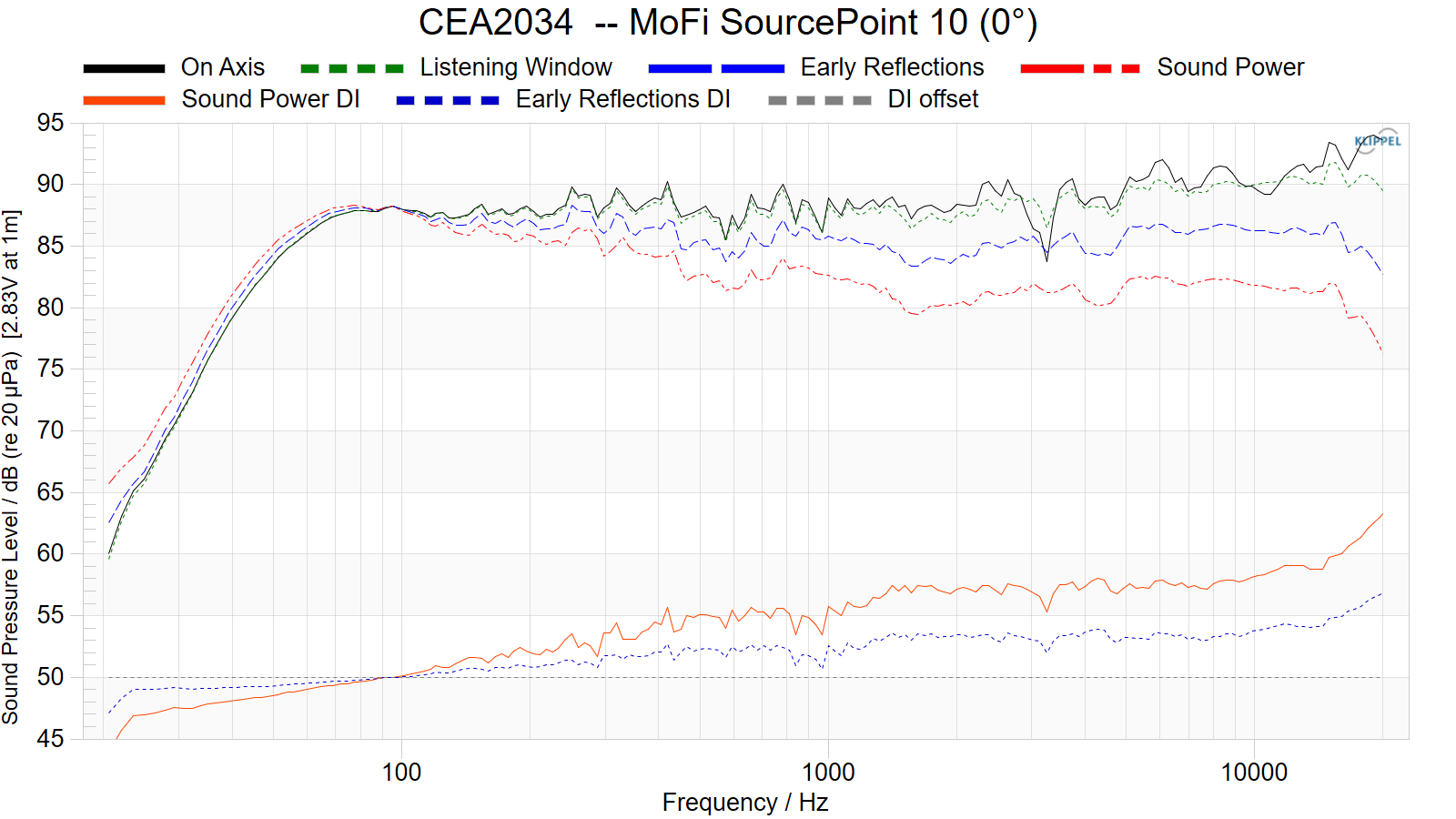
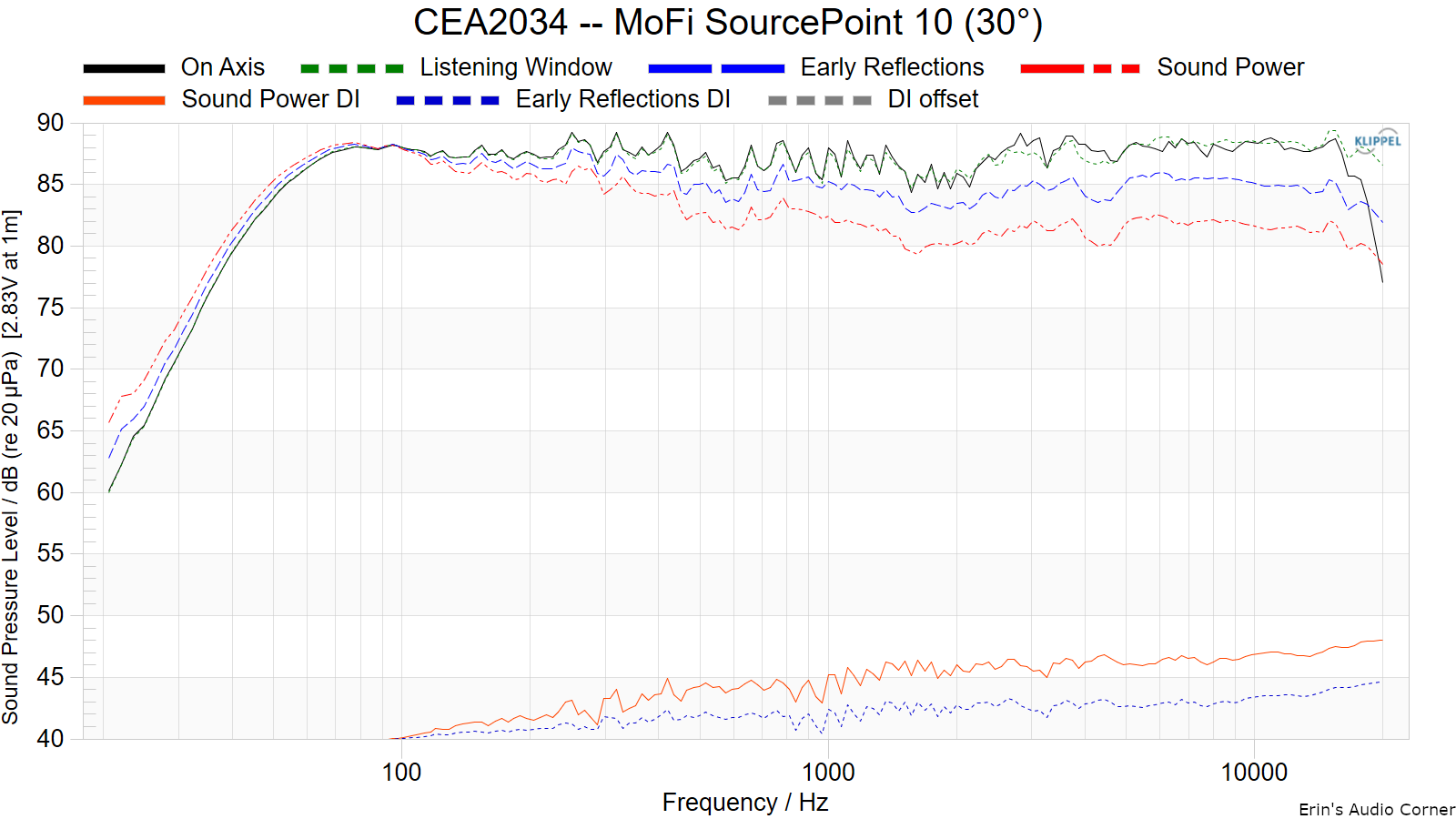
Early Reflections Breakout:
Floor bounce: average of 20º, 30º, 40º down
Ceiling bounce: average of 40º, 50º, 60º up
Front wall bounce: average of 0º, ± 10º, ± 20º, ± 30º horizontal
Side wall bounces: average of ± 40º, ± 50º, ± 60º, ± 70º, ± 80º horizontal
Rear wall bounces: average of 180º, ± 90º horizontal

Estimated In-Room Response:
In theory, with complete 360-degree anechoic data on a loudspeaker and sufficient acoustical and geometrical data on the listening room and its layout it would be possible to estimate with good precision what would be measured by an omnidirectional microphone located in the listening area of that room. By making some simplifying assumptions about the listening space, the data set described above permits a usefully accurate preview of how a given loudspeaker might perform in a typical domestic listening room. Obviously, there are no guarantees, because individual rooms can be acoustically aberrant. Sometimes rooms are excessively reflective (“live”) as happens in certain hot, humid climates, with certain styles of interior décor and in under-furnished rooms. Sometimes rooms are excessively “dead” as in other styles of décor and in some custom home theaters where acoustical treatment has been used excessively. This form of post processing is offered only as an estimate of what might happen in a domestic living space with carpet on the floor and a “normal” amount of seating, drapes and cabinetry.
For these limited circumstances it has been found that a usefully accurate Predicted In-Room (PIR) amplitude response, also known as a “room curve” is obtained by a weighted average consisting of 12 % listening window, 44 % early reflections and 44 % sound power. At very high frequencies errors can creep in because of excessive absorption, microphone directivity, and room geometry. These discrepancies are not considered to be of great importance.

Horizontal Frequency Response (0° to ±90°):

Vertical Frequency Response (0° to ±40°):

Horizontal Contour Plot (normalized):
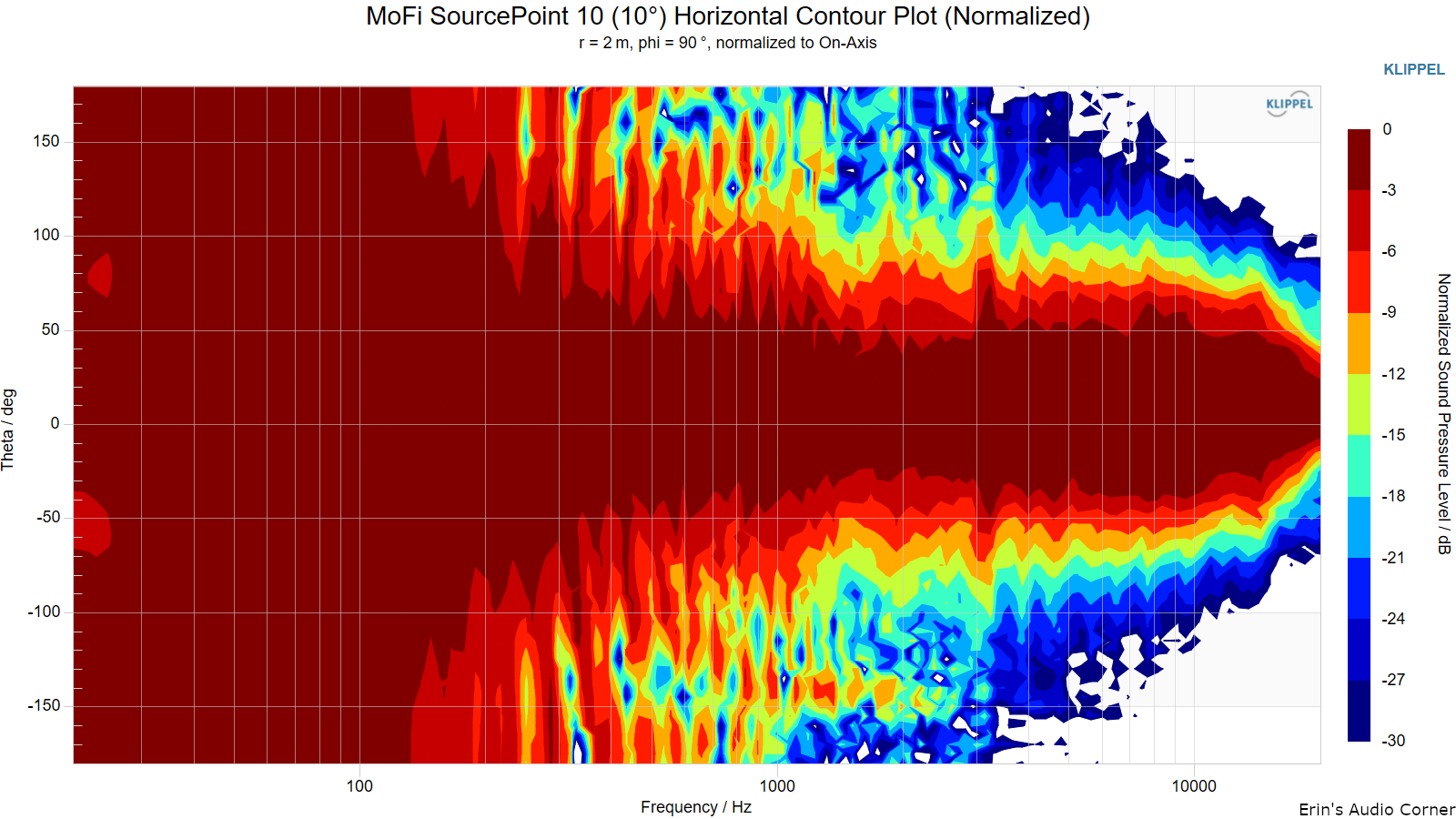
Vertical Contour Plot (normalized):

“Globe” Plots
Horizontal Polar (Globe) Plot:
This represents the sound field at 2 meters - above 200Hz - per the legend in the upper left.
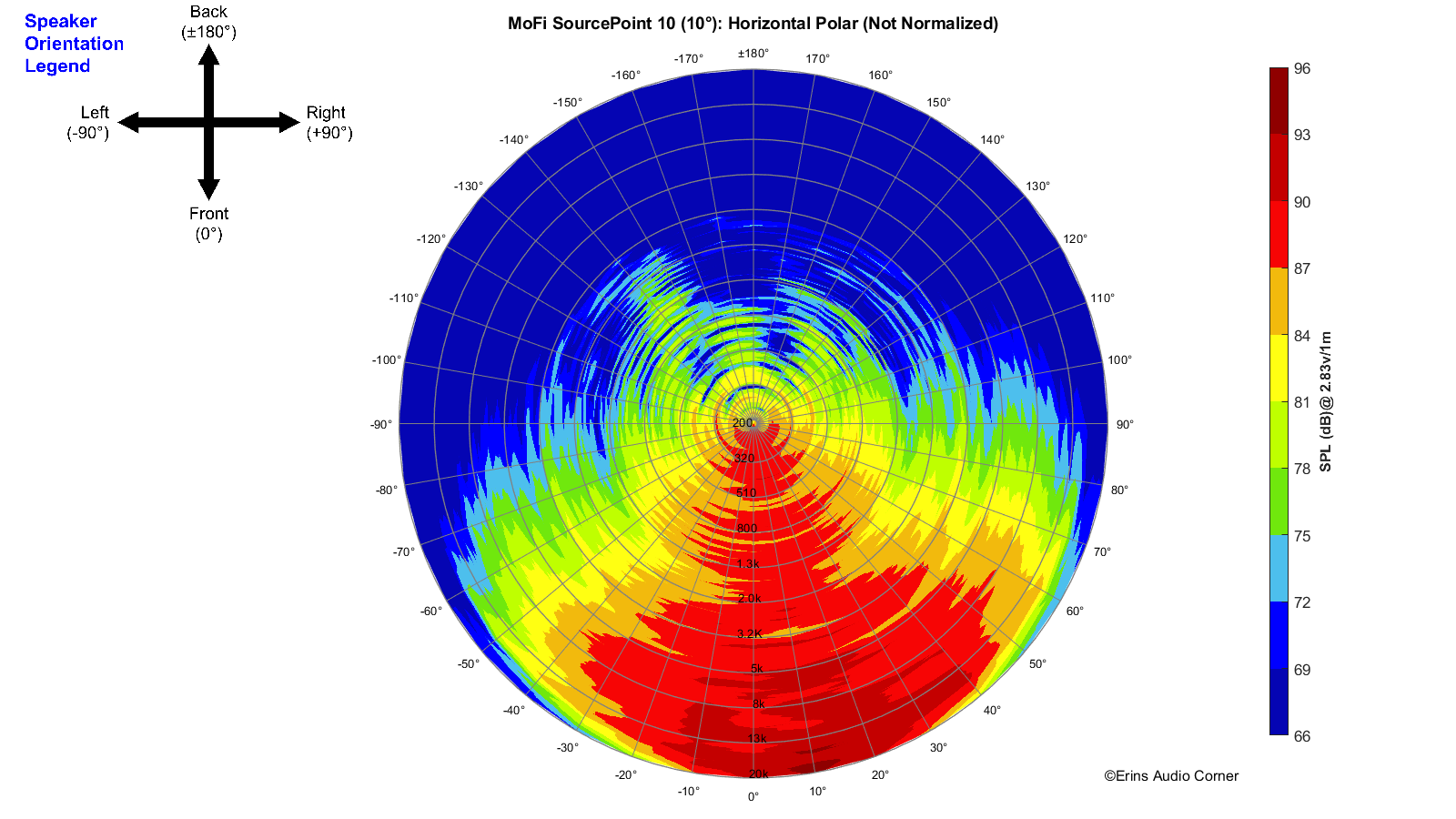
Vertical Polar (Globe) Plot:
This represents the sound field at 2 meters - above 200Hz - per the legend in the upper left.

Additional Measurements
Impedance
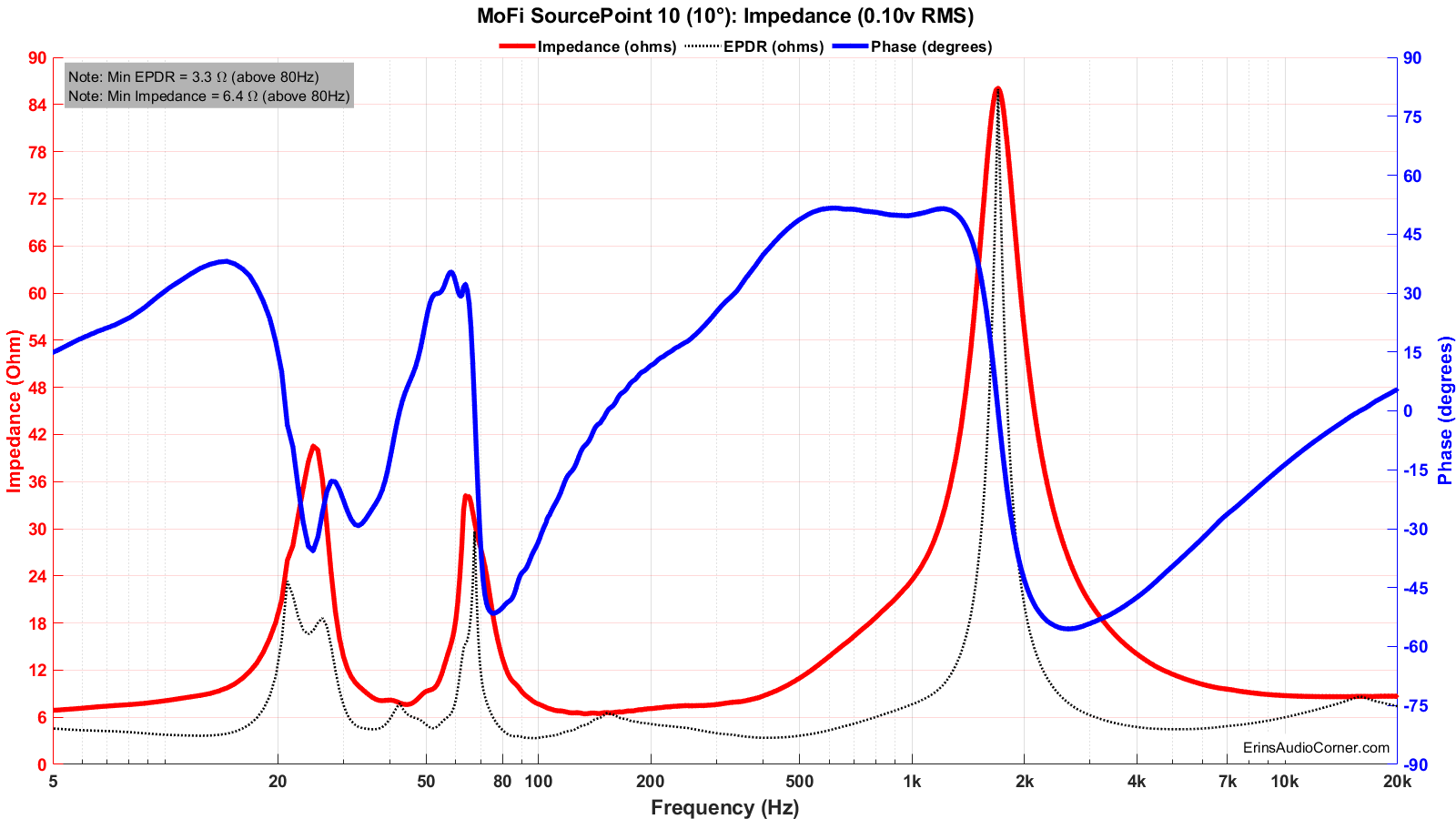
Response Linearity
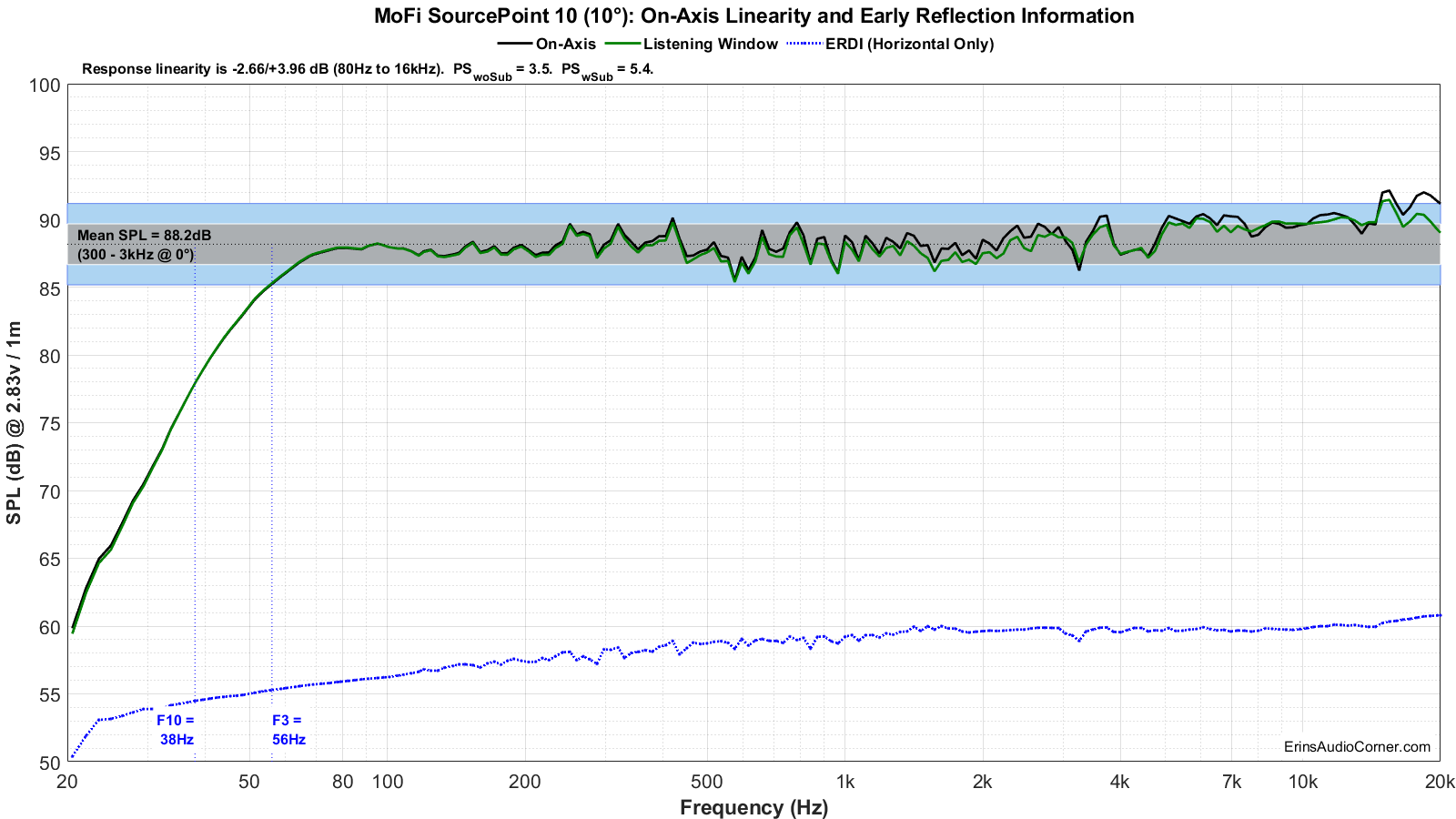
Step Response
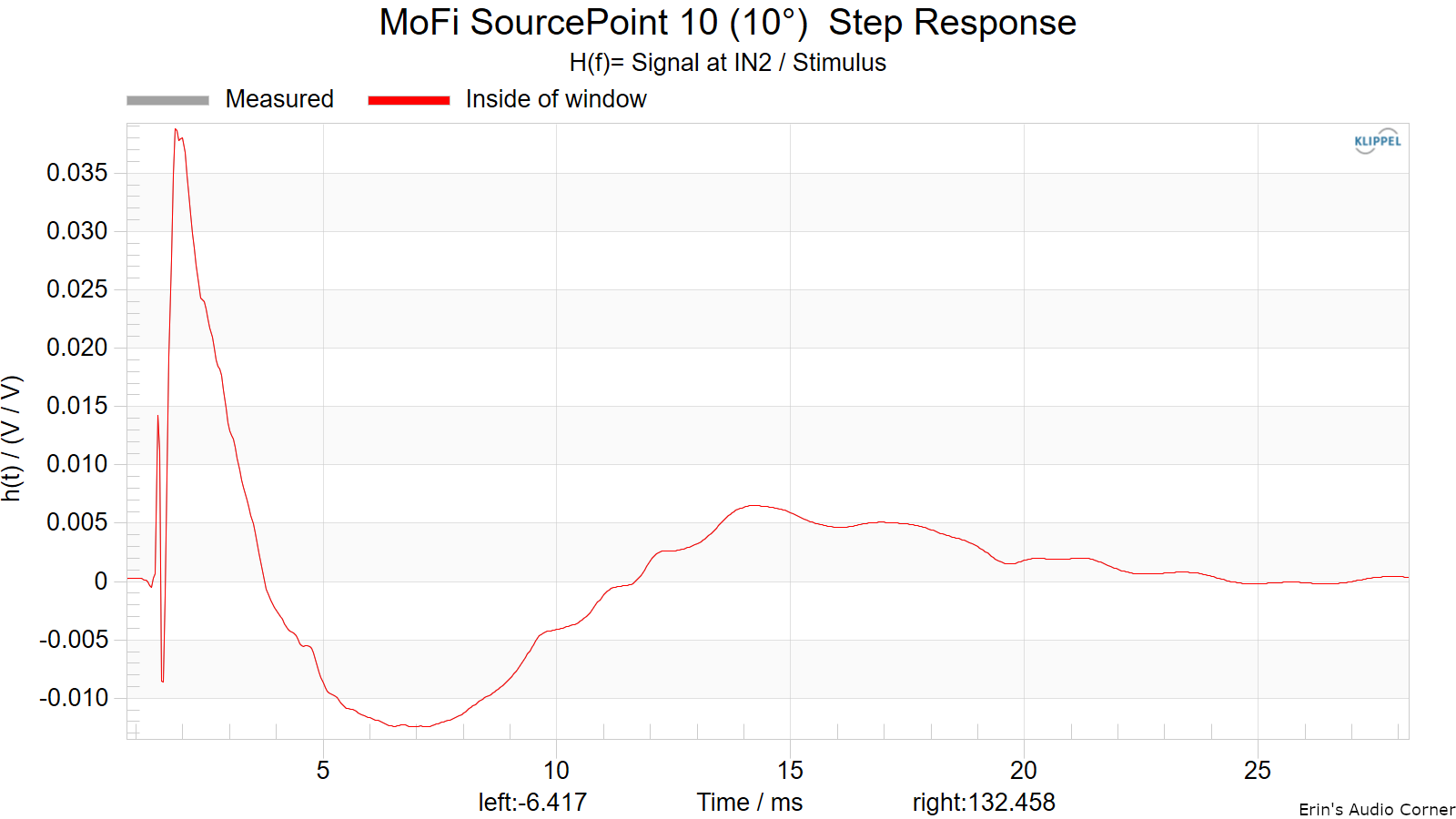
Group Delay
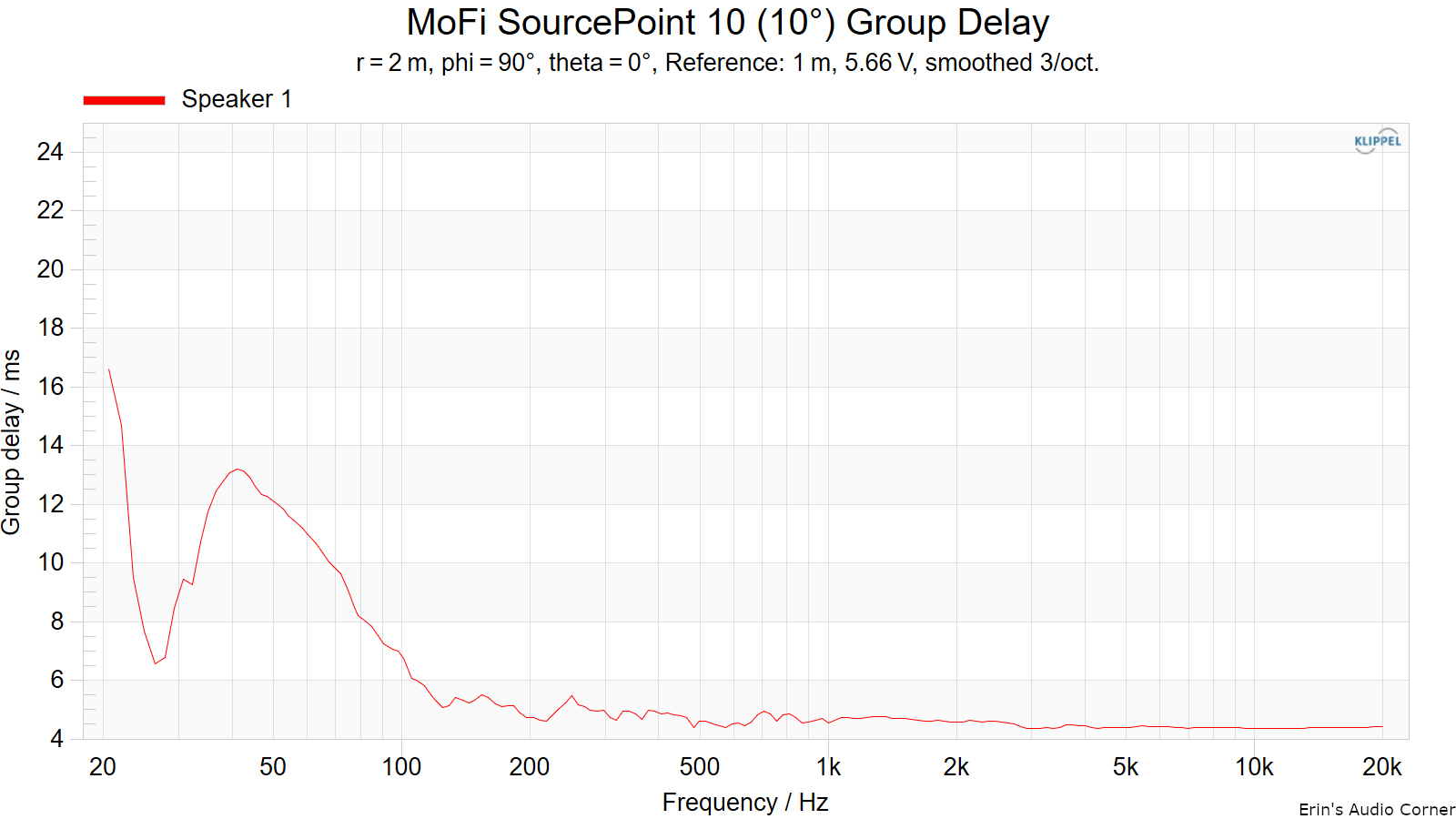
Harmonic Distortion
Harmonic Distortion at 86dB @ 1m:
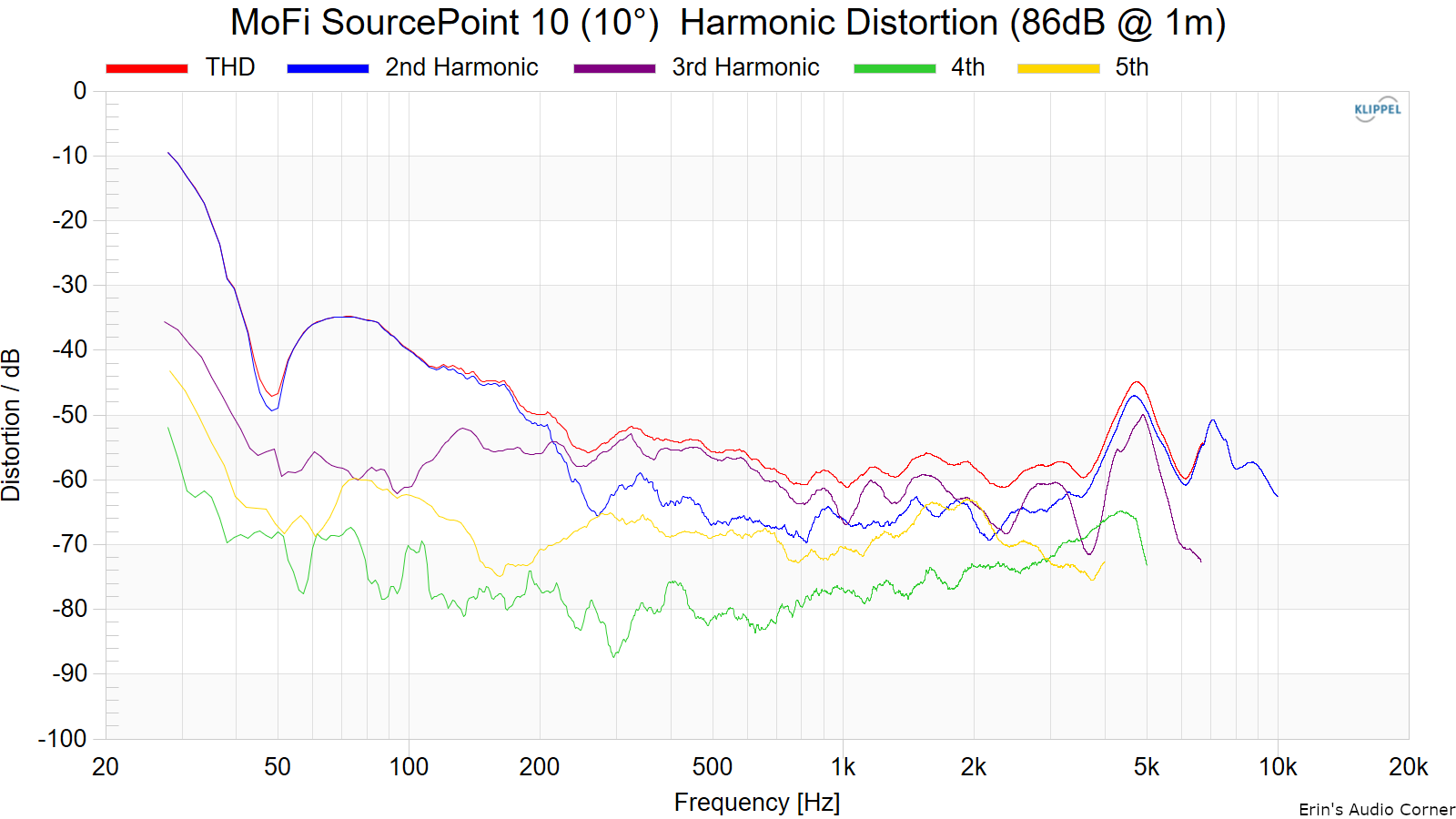
Harmonic Distortion at 96dB @ 1m:
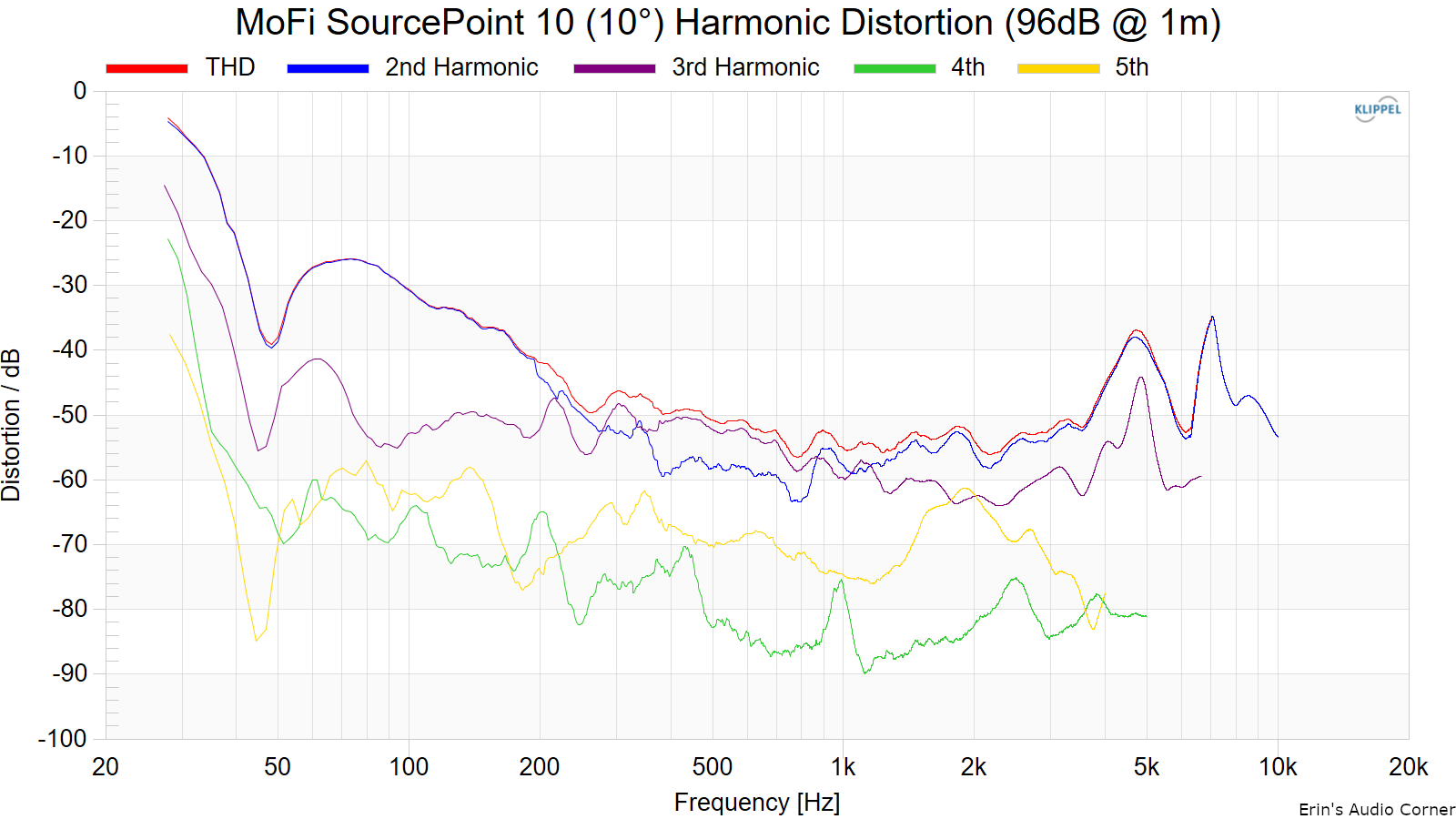
Dynamic Range (Instantaneous Compression Test)
The below graphic indicates just how much SPL is lost (compression) or gained (enhancement; usually due to distortion) when the speaker is played at higher output volumes instantly via a 2.7 second logarithmic sine sweep referenced to 76dB at 1 meter. The signals are played consecutively without any additional stimulus applied. Then normalized against the 76dB result.
The tests are conducted in this fashion:
- 76dB at 1 meter (baseline; black)
- 86dB at 1 meter (red)
- 96dB at 1 meter (blue)
- 102dB at 1 meter (purple)
The purpose of this test is to illustrate how much (if at all) the output changes as a speaker’s components temperature increases (i.e., voice coils, crossover components) instantaneously.
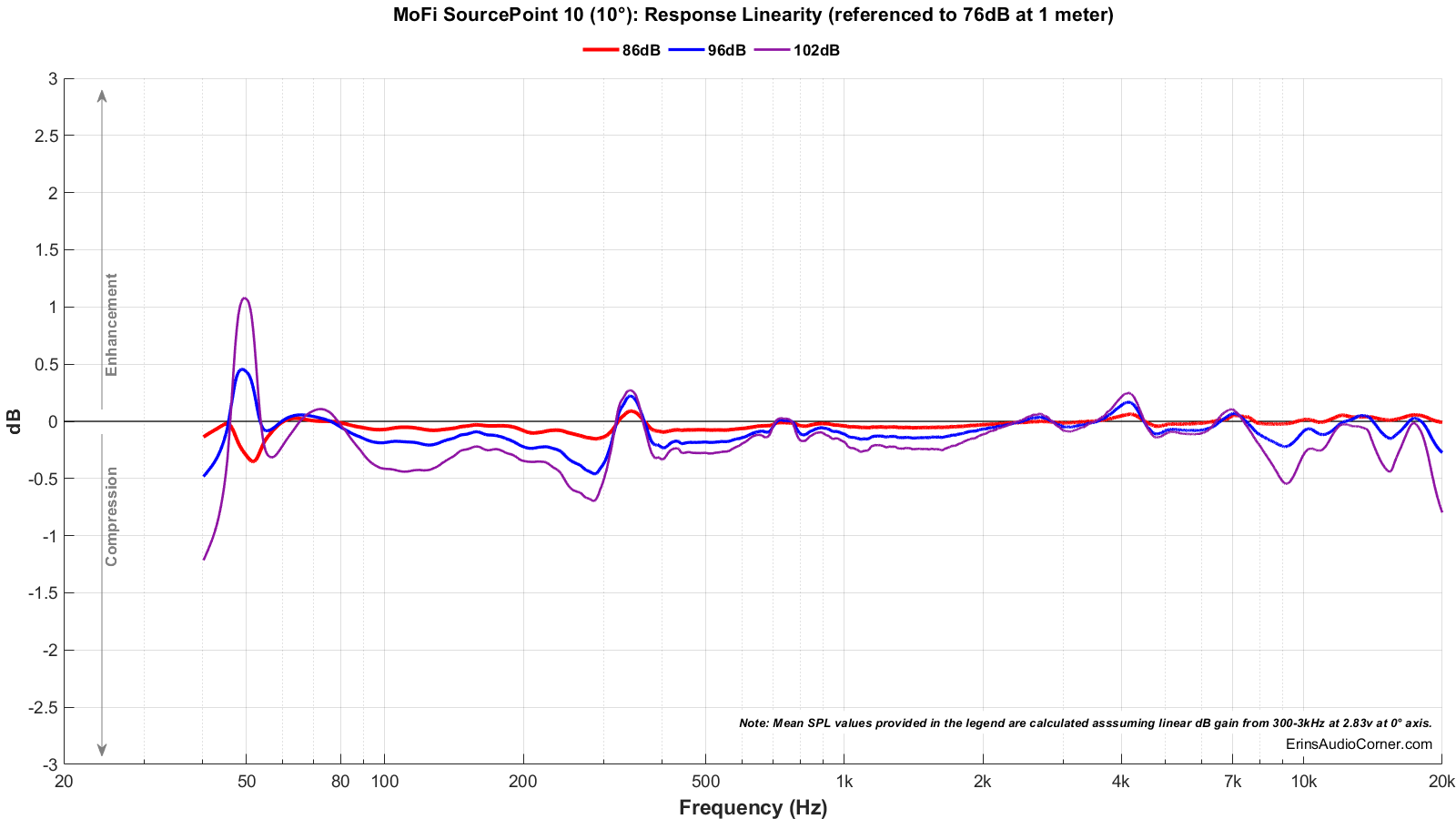
Multitone Distortion
The following tests are conducted at (4) approximate equivalent output volumes: 70/79/87/96dB @ 1 meter. The (4) voltages listed in the legend result in these SPL values.
The test was conducted in (3) manners:
- Full bandwidth (20Hz to 20kHz)
- 80Hz to 20kHz
The reason for the two measurements is to simulate running the speaker full range vs using a high-pass filter at 80Hz. However, note: the 2nd test low frequency limit at 80Hz is a “brick wall” and doesn’t quite emulate a standard filter of 12 or 24dB/octave. But… it’s close enough.
For information on how to read the below data, watch this video:
- Full bandwidth (20Hz to 20kHz)
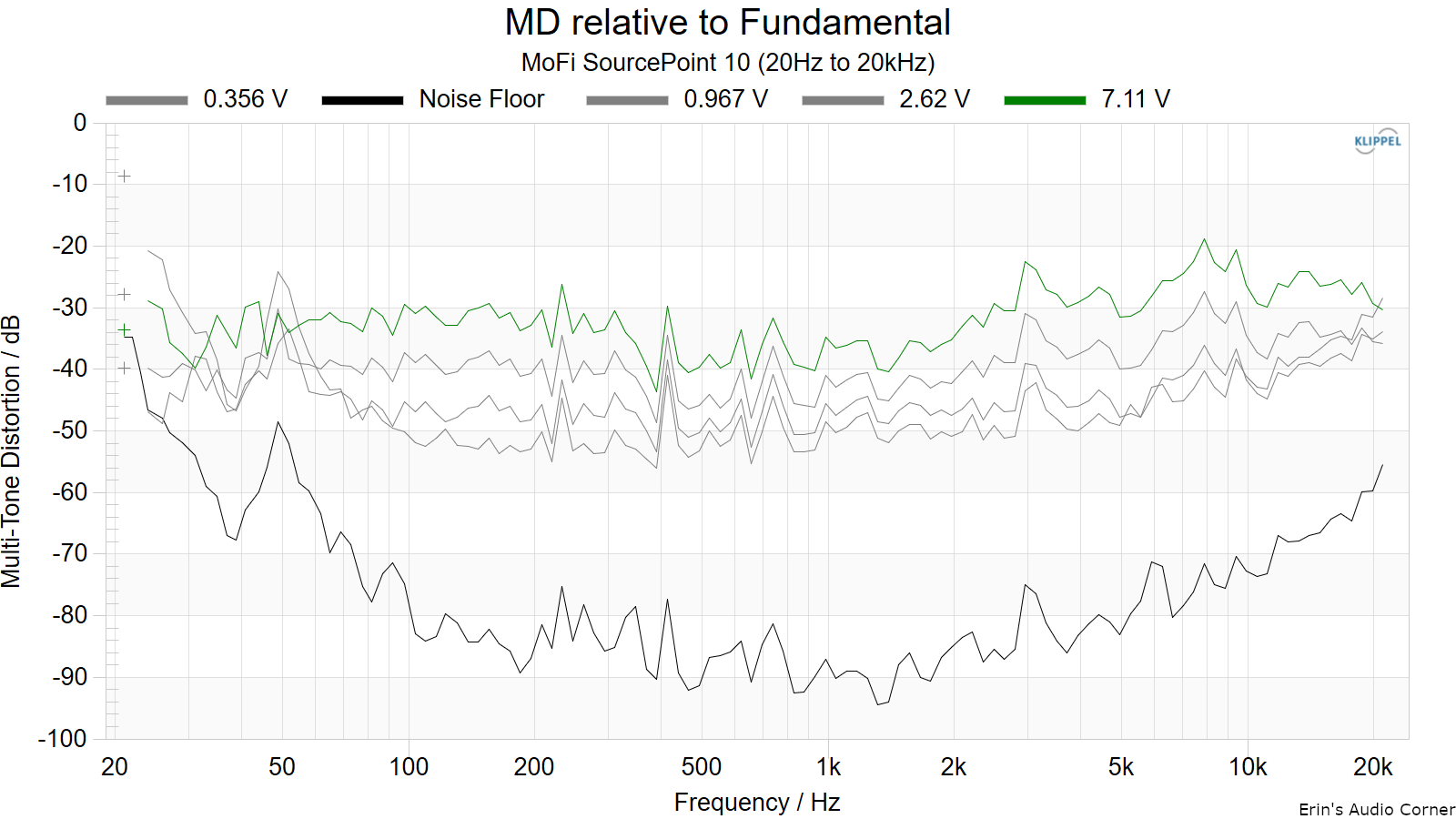
- 80Hz to 20kHz

Parting / Random Thoughts
See video linked above for subjective and objective analysis.
I recently had the opportunity to review the Mofi SourcePoint 10 speaker, courtesy of Mofi themselves. I haven’t watched any other reviews to avoid being influenced by different perspectives. In this review, I’ll provide my subjective thoughts along with objective data collected using my Klippel Near Field Scanner.
To begin, let me emphasize that the Mofi SourcePoint 10 is a truly exceptional speaker. However, it does have two shortcomings that I personally noticed. Firstly, the bass doesn’t reach the low frequencies I desired. In an anechoic environment, the F3 point is around 50 Hz, and in a room, it extends to about 40 Hz when placed near a wall. Although wall placement enhances the bass, it can also negatively impact the mid-range due to wall reflections causing a dip in the 200 Hz to 500 Hz range. Finding the right balance between bass and mid-range can be challenging. Personally, I chose to prioritize mid-range quality and kept the speakers about two and a half feet away from the walls.
Secondly, I found that the top end is boosted when the speakers are facing directly on-axis. However, like most coincident speakers, the Mofi SourcePoint 10 is not designed to be listened to directly on-axis due to diffraction issues caused by the tweeter housing. By slightly turning the speakers off-axis (around 10 to 15 degrees), you can alleviate the diffraction effect and reduce the excessive high-frequency lift to a degree (no pun intended). Sometimes I still found myself altering my pre-amp’s treble adjustment by 1-2dB as well. Another thought, in this case, it might also be worthwhile to consider using 1-inch acoustic absoprtion at the first reflection point to absorb the first reflection in the >10kHz frequencies.
During my conversation with Andrew Jones, the speaker’s designer, he explained that the high-frequency boost was implemented to counter the narrowing of the radiation pattern caused by the larger 28 mm tweeter. I found that around 15 degrees off-axis was the sweet spot for me, but experimentation with the positioning and settings is recommended to achieve the best results.
Although these two issues may seem like nitpicks, they can significantly impact the speaker’s neutrality. Proper placement and aiming are crucial to optimize the performance of the Mofi SourcePoint 10. Nevertheless, it’s worth noting that these considerations apply to many speakers, and the Mofi SourcePoint 10 stands out with its outstanding sound power and early directivity indexes, making it a true point source speaker.
Regarding output capability, the Mofi SourcePoint 10 surprised me with its dynamic range, even at low volumes. I was impressed by its minimal compression, considering the limitations of mid-range performance in coincident drivers. However, the speaker’s excursion is intentionally kept low to minimize HF modulation and limits its ability to reproduce frequencies below 50 Hz. Remember, the midrange/woofer of this design is a waveguide for the tweeter and you need to limit long excursion to minimize any modulation effects. Therefore, if you desire deeper bass extension, using a good sealed subwoofer or two as a supplement is recommended.
Analyzing the objective data from the NFS, the speaker’s measurements confirm its neutrality when placed off-axis. The dip in response and high-frequency lift observed on-axis are mitigated when the speaker is turned slightly off-axis. The horizontal and vertical radiation patterns are consistent, ensuring good coverage, albeit a bit narrow compared to non-waveguided designs. Compression and distortion remain within acceptable ranges for a low excursion woofer.
In terms of impedance, the Mofi SourcePoint 10 has a minimum impedance of 6.4 ohms, and its average electrical phase dipole radiation (epdr) is around 3 ohms. It’s advisable to use a 4-ohm capable amplifier to be safe.
In summary, the Mofi SourcePoint 10 is an outstanding speaker that delivers excellent performance, with only minor flaws. Its neutral sound and impressive sound power and directivity indexes set it apart.
Support / Contribute
If you find this review helpful and want to help support the cause that would be AWESOME! There are a few ways you can do so below. Your support helps me pay for new items to test, hardware, miscellaneous items needed for testing, new speakers to review and costs of the site’s server space and bandwidth. Any help is very much appreciated.
Join my Patreon: Become a Patron!
Shopping
If you are shopping at any of the following stores then please consider using my generic affiliate links below to make the purchase through.
Purchases through these links can earn me a small commission - at no additional cost to you - and help me continue to provide the community with free content and reviews. Doesn’t matter if it’s a TV from Crutchfield, budget speakers from Audio Advice or a pair of socks from Amazon, just use the link above before you make your purchase. Thank you!
